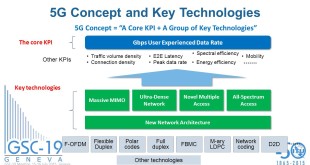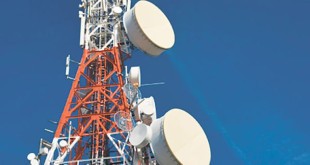Artificial Intelligence technologies aim to develop computers, or robots that match or exceed the abilities of human intelligence in tasks such as learning and adaptation, reasoning and planning, decision-making and autonomy; creativity; extracting knowledge, and making predictions from data. This technology focuses on developing an intelligent machine with advancements in …
Read More »Revolutionizing Satellite Ground Stations with Software-Defined Radios: Advantages and Opportunities
The operation of artificial satellite systems involves three main components: the space segment, user segment, and ground segment. The space segment consists of the satellite or constellation of satellites in orbit, along with the uplink and downlink satellite links. The user segment includes the end-user devices that interact with the …
Read More »DARPA Ouija employing very low- Earth orbit (VLEO) satellite sensors to predict military high-frequency (HF) radio communications
Whether in the field of battle, search-and-rescue or humanitarian aid efforts, the ability to share real-time, networked information between ground, sea and airborne forces is rapidly becoming the defining factor in a mission’s success. However modern satellite and other communications systems in higher frequecies are under constant threat from adversaries …
Read More »Connected Vehicles and V2X Vehicle to everything technology
Today 1.35M people die each year in automobile crashes globally; 38,000 in the U.S. alone, the equivalent of two 747s crashing in mid-air every single week. Counterintuitively, despite the COVID-19 pandemic leading to fewer drivers on the roads and a significant reduction in the number of miles driven, the latest …
Read More »From the ground to the skies: How SDRs are shaping the future of military communication
Software Defined Radio (SDR) refers to a radio communication system where most of the traditional radio hardware components, such as filters, amplifiers, and modulators/demodulators, are replaced with software running on a general-purpose computer. In an SDR system, the analog signals received by the antenna are digitized by an analog-to-digital converter …
Read More »5G key technologies from Radio interface, multiple access schemes, 5G Networking to Cognitive networks driving Worldwide Race
Mobile communications systems have evolved through wireless technology innovation into 2G, 3G, and then 4G to keep pace with ever-increasing voice and data traffic. All mobile communication system generations have had a clear key application driver: 1G for analog voice, 2G for digital voice and text messaging, 3G for multimedia …
Read More »Telecommunications is a critical infrastructure and needs to be protected from ever increasing cyber threats
Cyber-attacks are continuously growing in size and breadth, targeting organizations of all sizes across sectors, and telecom sector is no exception. According to PwC’s Global State of Information Security, 2016, IT security incidents in the telecoms sector increased 45% in 2015 compared to the year before. The rising danger posed …
Read More »Integrating Quantum Key Distribution (QKD) in 5G cellular networks will make it hackproof
The coming 5G standard will offer towering benefits, such as enhanced speed and performance, lower latency, and better efficiency. The 5G networks are rapidly adopting various developing technologies to provide high-speed data delivery. The 5G technology is being used in a variety of applications such as smart city, Industrial Internet …
Read More »Optical Fiber Network Technologies enabling terabit per second optical fiber networks for 5G, fiber-to-the-home (FTTH)
An optical network is a communication system that uses light signals, instead of electronic ones, to send information between two or more points. The points could be computers in an office, large urban centers or even nations in the global telecommunications system. These include limited range local-area networks (LAN) or wide-area …
Read More »DARPA MICEE to monitor and detect malicious activities in 5G/mobile infrastructure devices.
The New York Times reported that the US government has defined 5G competition as a “new arms race.” According to the report, “whichever country dominates 5G will gain an economic, intelligence and military edge for much of this century.” The transition to 5G is a revolution and “this will be …
Read More » International Defense Security & Technology Your trusted Source for News, Research and Analysis
International Defense Security & Technology Your trusted Source for News, Research and Analysis


